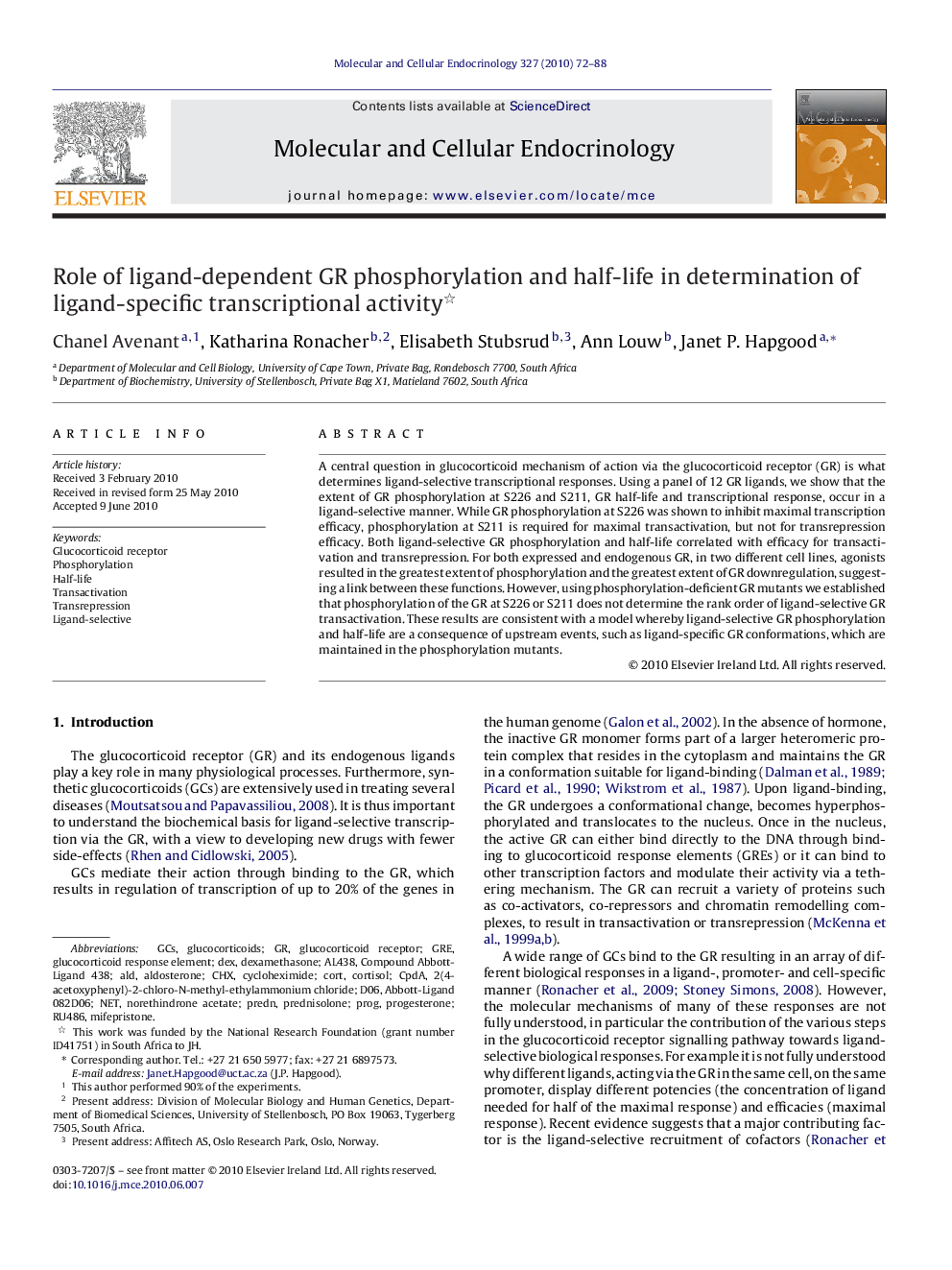| Article ID | Journal | Published Year | Pages | File Type |
|---|---|---|---|---|
| 2196832 | Molecular and Cellular Endocrinology | 2010 | 17 Pages |
A central question in glucocorticoid mechanism of action via the glucocorticoid receptor (GR) is what determines ligand-selective transcriptional responses. Using a panel of 12 GR ligands, we show that the extent of GR phosphorylation at S226 and S211, GR half-life and transcriptional response, occur in a ligand-selective manner. While GR phosphorylation at S226 was shown to inhibit maximal transcription efficacy, phosphorylation at S211 is required for maximal transactivation, but not for transrepression efficacy. Both ligand-selective GR phosphorylation and half-life correlated with efficacy for transactivation and transrepression. For both expressed and endogenous GR, in two different cell lines, agonists resulted in the greatest extent of phosphorylation and the greatest extent of GR downregulation, suggesting a link between these functions. However, using phosphorylation-deficient GR mutants we established that phosphorylation of the GR at S226 or S211 does not determine the rank order of ligand-selective GR transactivation. These results are consistent with a model whereby ligand-selective GR phosphorylation and half-life are a consequence of upstream events, such as ligand-specific GR conformations, which are maintained in the phosphorylation mutants.
